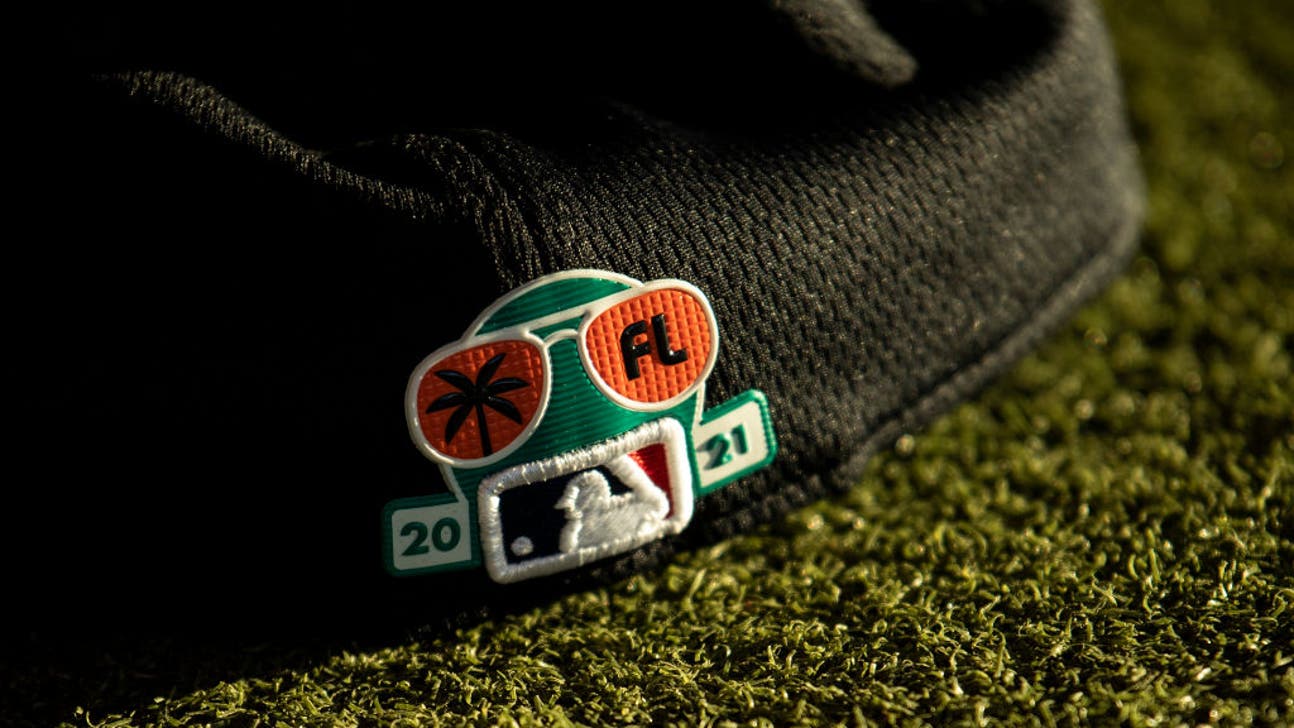
An insider's guide to baseball spring training
By Ben Verlander
FOX Sports MLB Analyst
Spring training is upon us.
It’s the time of year that baseball players have been waiting for — for a long time.
Typically, the beginning of the offseason is awesome. You have some downtime, you relax, you take a breather, you go on vacation, and you enjoy being off.

In a sure sign that the seasons are changing, Boston Red Sox players work out at their spring training complex in Fort Myers, Florida.
But that doesn’t last long. After about a month, the itch really gets to you. The team sends you the offseason workout program, and you’re back in the gym almost every day.
It doesn’t take long before hitters return to the cage and pitchers are throwing again.
Next thing you know, it’s February, and that first day of spring training can’t come soon enough.
For pitchers and catchers, report day is typically about a week earlier than it is for position players.
Why is that? Well, it takes pitchers longer to get their arms built up and ready to go for the regular season than it does for hitters to get their timing down and feel comfortable in the batter’s box.
I’ll always remember Ian Kinsler telling me one year that he pretty much knows it will take him 45 at-bats for his timing to feel "on."
He knew, down to an exact number, how much practice he needed to be ready.

Hitters, like Padres star Fernando Tatis Jr., will use spring training to regain their timing and get comfortable in the box.
A week after pitchers and catchers report, everyone has arrived at major-league camp, and locker rooms begin to fill up. Not long after that, the minor-leaguers arrive, and the other side starts to fill as well. "The other side" is a reference to the minor-league area of the complex or, as they used to say in the Detroit Tigers organization, "across the pond."
Locker rooms are shoulder to shoulder. Weight rooms are jammed. The batting cages – even at 7 a.m. – are packed.
Some of my fondest memories from spring training took place in those early-morning sessions in the batting cage. You never knew whom you'd end up hitting with in there.
My favorite memory, by far, was one morning when I was hitting off the tee in a cage by myself around 6:30 a.m. and Kirk Gibson walked in and asked whether I wanted him to "feed me," which means putting the balls on the tee between swings.
Of course, I said yes, and Gibson sat down and hit with me for an hour, telling story after story. We talked about the baseball swing, we talked about his career, we just talked – me and Kirk Gibson! – for an hour. It's those memories that stick with you forever.

Ben Verlander says he will never forget an early-morning conversation with Dodgers legend Kirk Gibson during Tigers camp.
The gym is where things get interesting and where I have found, through my years of playing and talking to other players, that spring training is run very differently from one organization to another. There is typically one main gym at a complex, so the mixture of major-league and minor-league players inevitably becomes a factor.
Some organizations want to blend the players so everyone is together, it all seems like one team, and players don’t feel far removed from their ultimate goal.
Other organizations keep the two sides completely separate. If it’s your time to work out as a minor-leaguer, and you walk over and a big-leaguer is still working out, you can’t even go in. You have to wait — for reasons that remain unclear to me.
Either way, spring training advances, and things get rolling.
Pitchers do tons of PFP (pitchers’ fielding practice) drills and start to throw to batters. Batters get in the box against live pitchers for the first time in a while.

Verlander says he still gets excited every spring by the start of a new baseball season.
Now, earlier I mentioned that batters get ready for the season more quickly and become "comfortable in the box" faster than pitchers can get their arms ready. But let me tell you: Those first few live at-bats, it looks like the pitcher is throwing 150 mph.
The first day of live batting practice, in fact, a lot of batters choose not to even swing the bat and simply track pitches. But day by day, sure enough, swings and timing get better and better.
For the players, every day is pretty much the same routine at spring training. Wake up early. Head to the complex. Put on your uniform. Stretch and throw as a team. Split into groups doing baserunning, outfield and infield work, hitting and bunting. Meanwhile, the pitchers are off doing their thing: PFPs, bullpens, etc.
Position players and pitchers are completely split, and they hardly ever see one another throughout the day.
After rotations with your group, typically it’s time for live batting practice. That’s pitchers throwing to batters. Finish that, and it’s on to baserunning to end the baseball portion of the day. Then it’s off to the weight room for a workout before hitting the showers and heading home.
The next day? Repeat it all over again.

Most days in spring training blend together, as the routine bleeds from one day to the next.
These are action-packed days, but they become monotonous rather quickly.
Which is why it’s nice when it’s time to start playing games against other teams.
Once games start, however, the days aren’t actually all that different. You go through the same things in the morning and then play a game in the afternoon.
Still, it’s nice to see other players in different colored uniforms.
In early spring training games, starting pitchers typically throw two or three innings, and position players typically play four or five. That ramps up as games continue until pitchers are throwing six or so innings and position players are playing full games.
By mid-to-late March, everyone is ready to get out of Arizona or Florida — especially those who know they have a spot on the team.
Which brings me to a very interesting thing about spring training: It is different for everyone.

When the full squad arrives, the weight room will become a very crowded place in the spring complex.
Some players go in knowing they have a spot on the team, and they are able to use the time to get ready for the season.
Other players do not have that luxury. They have to come in ready to roll, ready to fight to make a team. For them, spring training is an evaluation period, and they have to bring it every day, for every game.
If they don’t, they’re in jeopardy of being released.
And then you reach the scary part of spring training: cut days.
On the big-league side, cut day could mean you’re off to the minors. On the minor-league side, however, cut day could mean the end of a dream. It could mean your time to hang up the jersey has come.
Some players who are cut in spring training will find another team to play for, but for many, it is the end of their lifelong journey playing baseball.
Word spreads quickly on these days, starting around 7 a.m., when everyone is in the cafeteria eating their breakfast. "It’s a cut day," you’ll hear from across the table. Even if you’re 99 percent certain you’ll be OK, doubt still creeps in.
For those who don’t get cut, spring training continues, and it’s the one time all year that every person in an organization is in one area. "The brass" is all there, so you keep fighting every day to get better, to win a spot, to impress everyone you can.

Young phenoms emerge and careers come to a close every year at spring training.
As things begin to wind down, the big-league team emerges, and in the final week, there are maybe 26 or 27 guys in the clubhouse fighting for the final 25 spots. Eventually, the final cut is made, and the major-league team is solidified.
On the other side, talk starts about where everyone is going to play. "I’ve been playing with the AA team all spring," someone might say. "I think I’m going there."
It all leads to roster release day. Let me tell you: This day is WILD.
You walk up to the big board and see the rosters listed for every team. You look for your name first and then look at all your teammates. I’ve seen guys high-fiving and celebrating, and I’ve seen guys crying because they weren’t listed where they thought they’d be.
As the dust settles, the major-league squad plays a few more games before taking off to its Opening Day location. The minor-league side plays a few more games with its official roster, and everyone starts to get a feel for what lineups will look like before the team heads to its home location.
It all happens so quickly. And it all happens so slowly.
It starts to drag as you get close to the start of the season, but when it’s all done and you look back on what you went through, you realize so much happens in the span of about a month.
Spring training is beautiful. It’s the start of baseball season. It’s seeing your friends again. It’s getting to play the game you love.
It's where I got closer to Al Kaline, Mr. Tiger. Often, maybe once or twice a week, the Hall of Fame outfielder and I would sit down together and eat lunch. He'd tell stories about baseball, about his wife, about breaking into the bigs at 18. You name it, we talked about it. He'd always make a point to ask about me, but I'd quickly turn the discussion back to him and his life.

Hall of Famer Al Kaline, right, and Verlander developed a relationship during numerous conversations at spring training.
I had the pleasure of getting close with one of the most incredible people to ever don a baseball jersey. Fortunately, at the end of the 2019 season, I was able to get up to Detroit and speak to him one last time before he passed away in April 2020. He signed a jersey for me, and we took a picture together on the field that I'll cherish for a lifetime.
Spring training is where these memories are made. It's a magical time of year.
And right now? We’re at the beginning. Pitchers and catchers have reported. Position players are coming in any day now. Excitement about baseball is building all around the country.
Because no matter how short or how long spring training feels, no matter whether you’re a major-league veteran or a rookie fighting for that 25th spot, it all means one thing.
It’s go time.
It’s baseball season.
Ben Verlander, who spent five years in the Detroit Tigers organization, is a baseball analyst for FOX Sports. Born and raised in Richmond, Virginia, Verlander was an All-American at Old Dominion University before he joined his brother, Justin, in Detroit as a 14th-round pick of the Tigers in 2013. Follow him on Twitter @Verly32.










